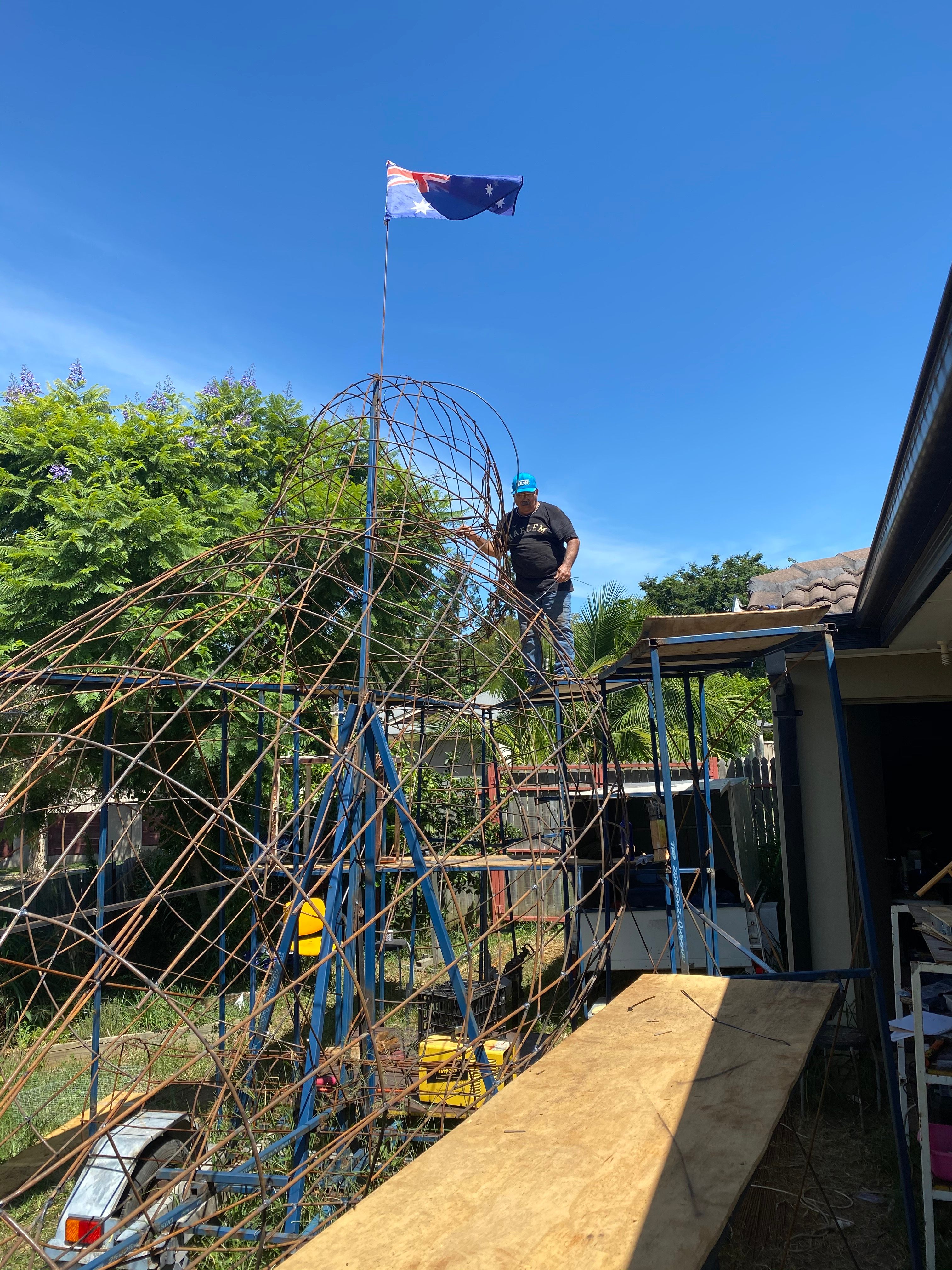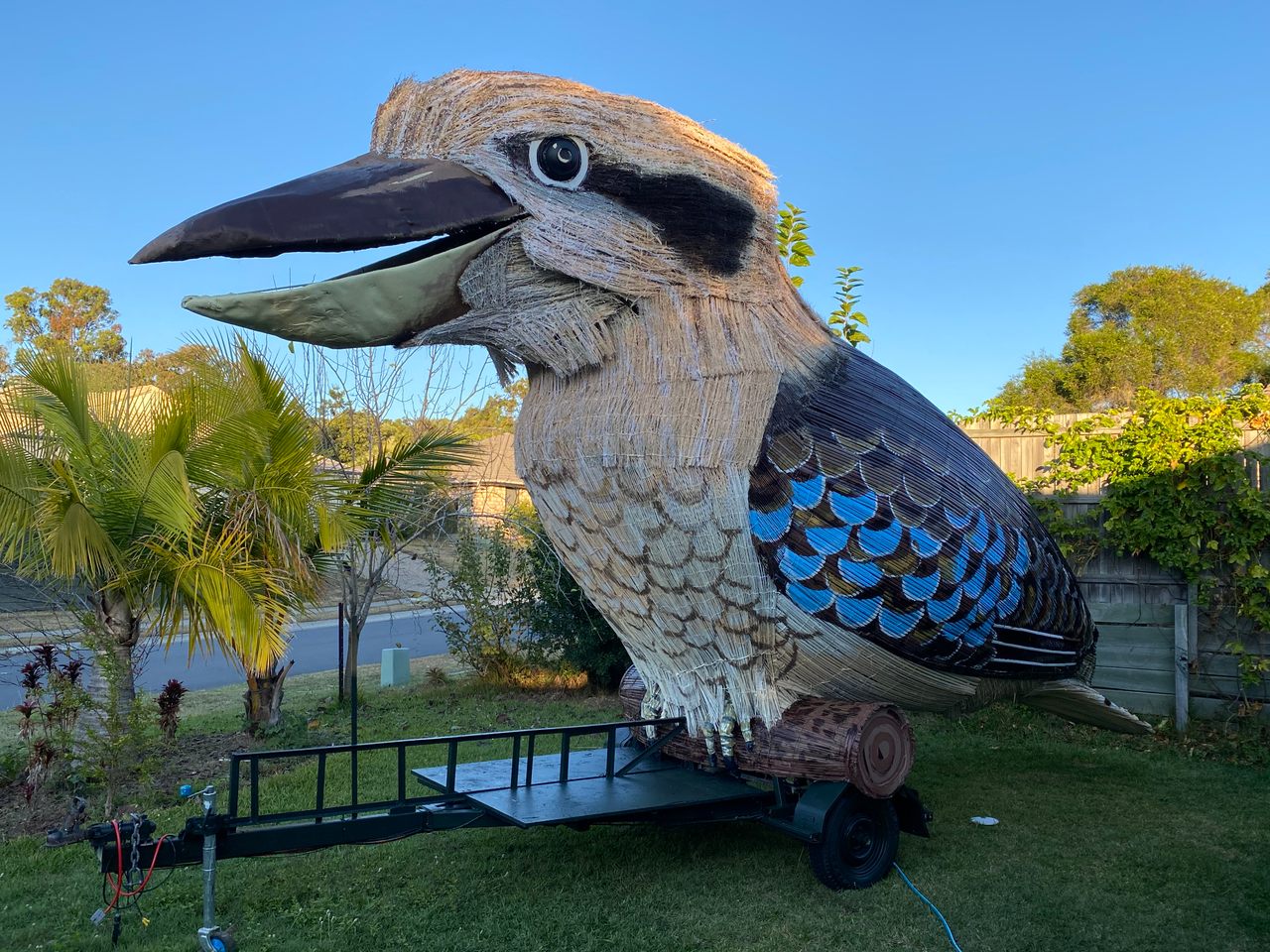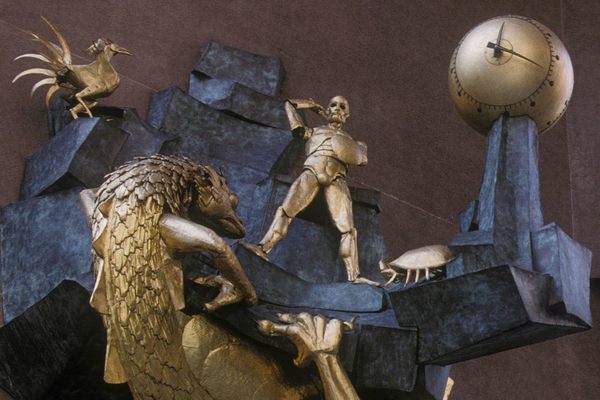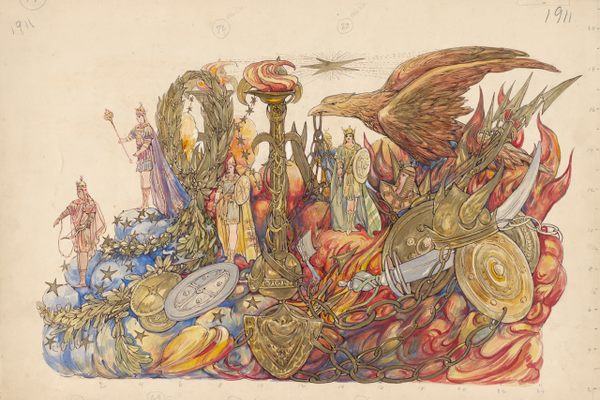This Gigantic Laughing Kookaburra Is Out to Brighten Your Day
A sculptor hitched the cackling bird to a trailer and is taking it on the road.
Farvardin Daliri, a sculptor who lives in suburban Brisbane, Australia, recently built an oversized, electrified laughing kookaburra that stands roughly 15 feet tall. Laughing kookaburras, formally known as Dacelo novaeguineae and native to Eastern Australia’s eucalyptus forests, are known for their calls, which ring out like peals of laughter at dusk and dawn. (Some mornings, when kookaburra cries clatter through the neighborhood, Daliri’s wife thinks that he has slipped outside and switched on the giant bird.) Daliri installed a secondhand car battery and motor to crank the bird’s beak open and closed; inside its metal body, he nestled an amplified recording of a real-deal kookaburra. When the automata is flipped on, the oversized bird seems to cackle.
Though Daliri made the sculpture to delight the area’s human residents, it seems to intrigue the feathered denizens, too: “Some come closer and closer and sit on electric lines and watch,” he says. “Other kookaburras laugh back.” Daliri doesn’t monkey with his enormous creation in the morning, though. When laughter drifts in through the windows, “it’s the real ones laughing,” he adds. “Mine is sleeping.” Atlas Obscura spoke with Daliri about larger-than-life sculpture, and why laughter matters now.
Australia is full of big things. What draws you to oversized art?
I’ve made many sculptures, and most of them are oversized. I made a mythological snake that was a totem for the First Nations people in Burdekin Shire, and a 33-foot crocodile as a tourist attraction just before entering Townsville. Once you make [sculptures] in this size, they’re impressive. Their body shape and anatomy is so fascinating.
Why build a kookaburra?
The kookaburra is considered very mythical by the First Nations people in Australia. It’s considered a good omen. Also, its laughter is contagious: You want to laugh when you hear them laughing. When the COVID-19 lockdown happened, I decided to make the laughing mechanism really work. It’s the first sculpture I’ve made with moving parts. Against the background of so many sad things happening—natural disasters, health disasters, human-made disasters—we find hardly anything to be happy about, and we need to really start thinking about having a laughing session.
Used my time in lockdown to build a giant laughing Kookaburra. #giantlaughingkookaburra pic.twitter.com/1GWguIcpA4
— Dr Farvardin Daliri (@DrDaliri) May 26, 2020
How did you pull this off?
Inside, it’s made of round steel cords, turned round and round in circles, and interlocked and welded together. The bird is welded to the trailer that was in my backyard. The backyard was slightly sloped, so I had to level the trailer with cinder blocks—but the structure is so strong and sturdy that I can put my foot on it, like a step.
Fabricating the outer shell was a challenge, because anything you use is going to add a lot of weight—fiberglass or plaster could be so heavy that movement would be difficult. I had to keep it light. The top surface is bamboo straws, all natural fibers, knitted together with wire and then painted. From a distance, it looks like feathers. I used fiberglass for the beak, ceramic for the eyes, and then wire, glue, and paint.
How did your family and neighbors feel about you working on this in the yard?
I have very supportive neighbors! They brought their kids around to look at the progress. Some of them kept photo diaries of what’s happening. My work isn’t noisy, because I work mainly by bending and shaping the steel, not banging. Sometimes I have to use the grinder to cut certain things, but unless I burn myself or drop something into my shoe and scream, you don’t hear much. (That happened quite a few times.) When you’re working from a height and welding above your head, a bit of melt from the steel can roll down and drop, and it burns.
My wife was a little concerned about the mess because the grass had overgrown, and there was dog poop underneath the trailer and a lot of off-cast pieces of steel. She asked me to move it.

What was the most rewarding part of the process?
My favorite part is getting my hands on the sculpture. As soon as I start working, I can go forever—until the sun dies, until I’m dead. That’s how sculpture is for me.
What’s the bird up to now?
Now it’s parked in front of the house. We brought it out once, my son-in-law connected it, and we went around the block, for maybe 10 or 20 minutes, to check the laughing mechanism, balance, everything else. It will eventually go to Townsville, about 870 miles away, and to other receptions. We will have a laughing session wherever we go. There’s a need for people to have a break.





























Follow us on Twitter to get the latest on the world's hidden wonders.
Like us on Facebook to get the latest on the world's hidden wonders.
Follow us on Twitter Like us on Facebook